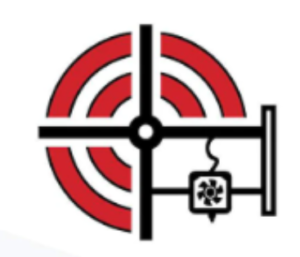Protolabs (NYSE: PRLB) had another strong quarter, setting a new revenue record and keeping profits steady. The digital manufacturing company said demand was solid across its key markets, with more customers ordering custom parts through its online factories and partner network. But while most of the company’s services grew, 3D printing didn’t grow along with the rest.
In the third quarter, total revenue reached $135.4 million, up nearly 8% from a year ago. Net income came in at $7.2 million, or 30 cents per share, about the same as last year. That’s also a step up from earlier in 2025, when Protolabs reported $3.6 million in revenue for the first quarter and $4.4 million for the second. The company’s growth picked up throughout the year, with steady profits along the way, though its 3D printing revenue fell about 6.3% year-over-year, from $21.4 million in Q3 2024 to $20.1 million in Q3 2025, mainly due to weak demand in Europe.
Rebounding After a Slow Start
Protolabs’ first half of 2025 had been slower, with softer earnings and mixed demand trends. The first quarter saw lower profits year-over-year, as customers held off on orders amid broader manufacturing uncertainty. The second quarter brought improvement, pushing revenue to $135.1 million and showing that the company was beginning to recover. By Q3, Protolabs had regained momentum, marking its highest quarterly revenue in company history and strengthening its profit margins, thanks mostly to CNC machining and sheet metal production, not 3D printing.
While Protolabs’ overall business is growing, its 3D printing segment tells a different story. CNC machining remains its largest segment, accounting for roughly 40–45% of total revenue and climbing nearly 18% year-over-year, fueled by strong demand from aerospace, defense, and industrial customers. Injection molding represents roughly 30–35%, and sheet metal adds another 10–12%, rising about 14% this quarter. Meanwhile, 3D printing (which makes up roughly 15% of the business) was the only segment to fall.
The decline was largely tied to weaker demand in Europe, where manufacturing activity has slowed. At the same time, many of Protolabs’ customers who once turned to 3D printing for rapid prototypes are now turning to CNC machining and molding for low-volume production runs, which have more predictable prices. 3D printing remains part of the company’s strategy, but for now, it plays a smaller role than Protolabs’ more traditional and faster-growing manufacturing services.
CEO Suresh Krishna, noted “Protolabs generated another quarter of accelerated growth and record revenue, supported by strong performance in several key end markets, and a substantial increase in revenue per customer contact. I am very encouraged by the progress we’ve made over the last two quarters—we have significant momentum into year-end. While it’s still early, my short time here has strengthened my confidence that our current strategy — delivering high-quality, custom parts throughout the product lifecycle, from prototyping to production — is the right one.”

Metal 3D printing. Image courtesy of Protolabs.
Protolabs operates a hybrid model that combines its own “digital factories” with a growing partner network of manufacturers around the world. This double approach lets customers upload CAD files online and receive quotes and parts in days, rather than weeks.
In Q3, revenue generated through Protolabs’ own digital factories was $105.3 million, representing a year-over-year increase of roughly 5%. Meanwhile, its Protolabs Network (which connects customers to vetted external suppliers) rose even faster, growing more than 19% to $30.1 million. The company served over 21,000 customers in the quarter, and revenue per customer contact increased 14% year-over-year to $6,370.
That increase points to the fact that customers are spending more per project; it’s a good sign for the company’s long-term growth, especially as more businesses use Protolabs not just for prototypes but for low-volume production. Unfortunately, its 3D printing division continues to face headwinds.
Financial Outlook
Protolabs ended the quarter with $138.4 million in cash and investments, pointing to strong cash flow and strong operations. The company generated $29.1 million in cash from operations during Q3 and continued to buy back shares, showing confidence in its own financial position.
CFO Dan Schumacher added: “Along with record revenue in the quarter, we continued to demonstrate the strength of our business model by expanding adjusted EBITDA as compared to the second quarter of 2025, continuing our best-in-class cash flow generation, and returning capital to shareholders via repurchases of common stock.”

Protolabs headquarters. Image courtesy of Protolabs.
Looking ahead, Protolabs expects fourth-quarter revenue between $125 million and $133 million, a slight slowdown that’s normal for the season. What’s more, the company expects to earn between 12 and 20 cents per share in the fourth quarter, or 30 to 38 cents per share on an adjusted (non-GAAP) basis.
Even though the company expects a small slowdown, things are still improving. After a slow start to the year, Protolabs grew in the second and third quarters, keeping profits steady and reaching record sales.

3D printed Inconel 718 parts made by Protolabs. Image courtesy of Protolabs.
After a cautious 2024, investors are seeing signs of a comeback. In 2025, demand for fast, on-demand manufacturing has been rising, and Protolabs’ digital model is meeting that demand.
Its ability to combine automation, software, and a distributed supplier network positions it well in a market increasingly defined by speed and flexibility. Still, the company’s challenge will be to revive its 3D printing business, which has softened even as its other services surge.
As Krishna put it, the mission now is to “accelerate profitable growth and position Protolabs for long-term shareholder value creation.” That probably means continuing to scale the network side of the business, keeping margins strong, and finding a way to reignite growth in 3D printing, which once helped define the company’s “digital manufacturing identity.”
Subscribe to Our Email Newsletter
Stay up-to-date on all the latest news from the 3D printing industry and receive information and offers from third party vendors.




